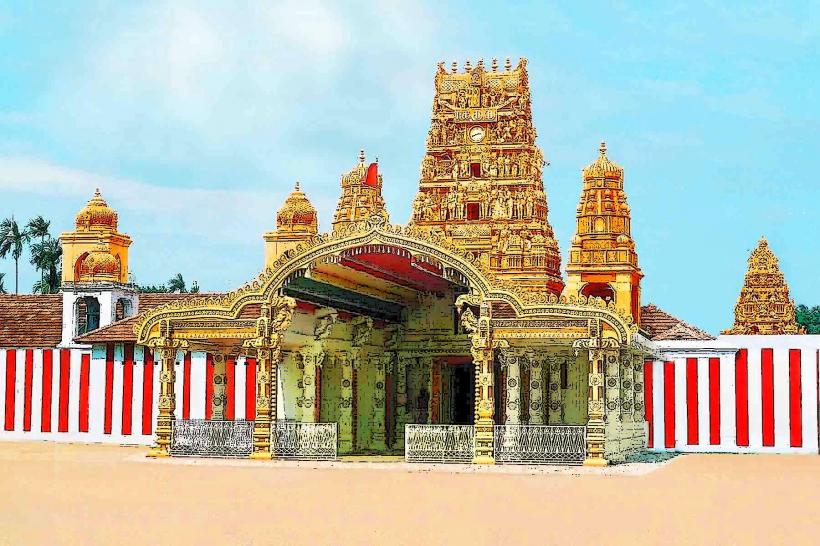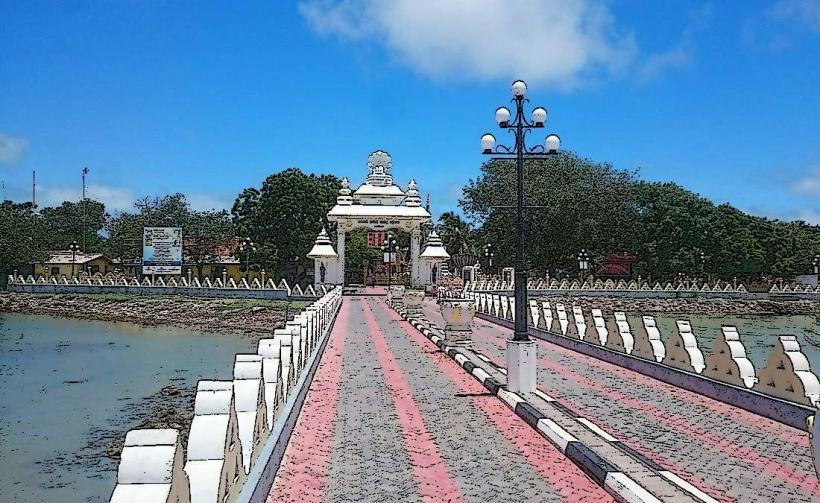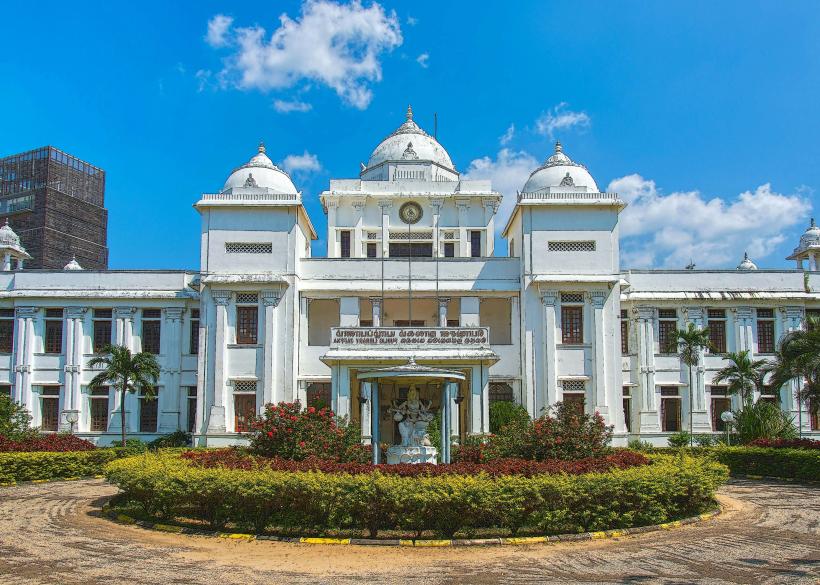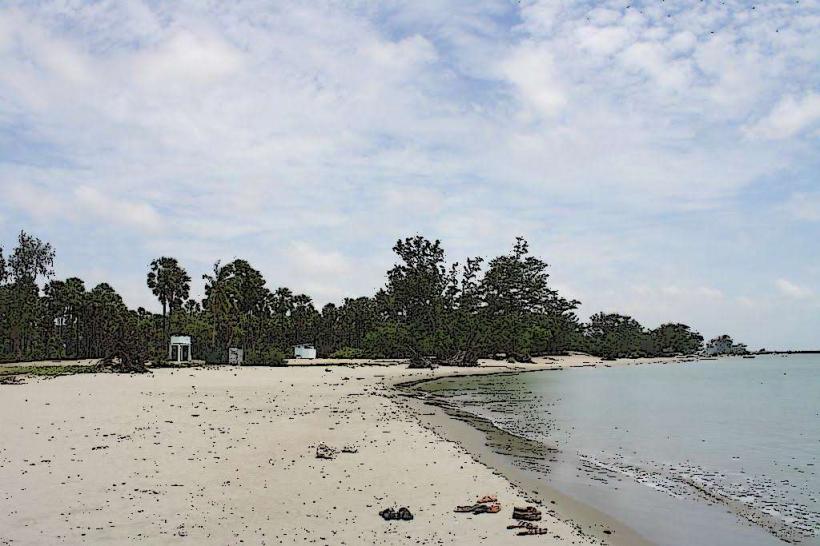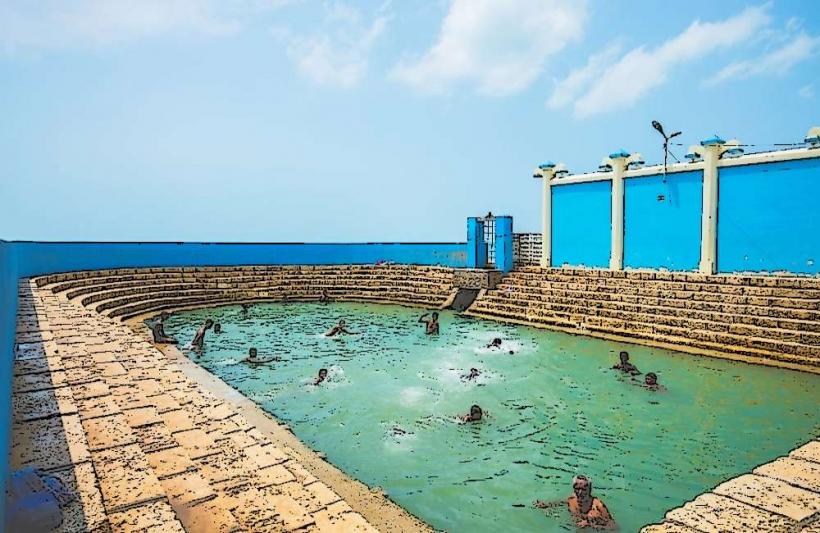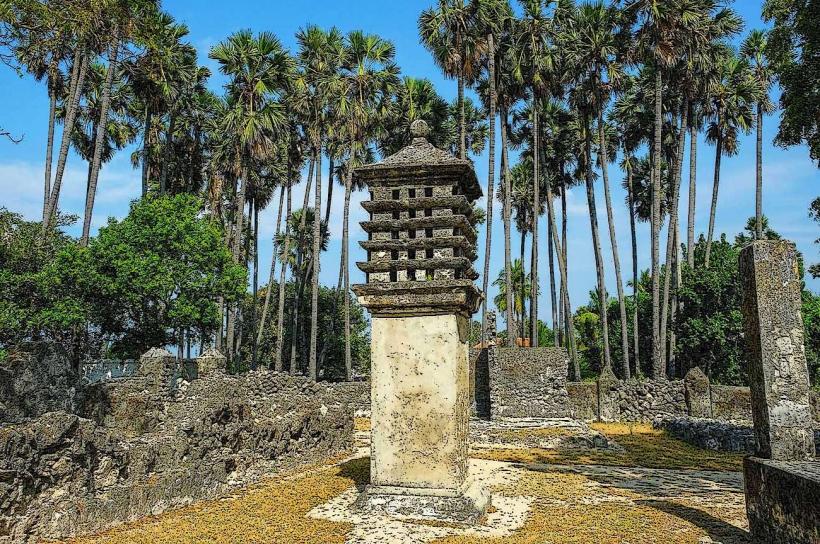Information
Landmark: Jaffna FortCity: Jaffna
Country: Sri Lanka
Continent: Asia
Jaffna Fort is a historically significant fortress located in the northern city of Jaffna, Sri Lanka. Built by the Portuguese in the early 17th century, it has since been modified and expanded by the Dutch and British. The fort is an important symbol of the colonial history of Sri Lanka and provides insight into the military architecture and historical changes in the region.
1. Overview
- Location: In the heart of Jaffna city, situated on the northern tip of Sri Lanka.
- Historical Significance: The fort has played a crucial role in the military history of Sri Lanka, particularly during the colonial period, and has witnessed several changes in ownership and usage.
- Current State: While much of the fort is in a state of ruin, its walls, gates, and several buildings still stand, allowing visitors to explore its structure and gain a sense of its historical significance.
2. Historical Background
Portuguese Era (1618-1658): The fort was originally constructed by the Portuguese in 1618 as a part of their efforts to consolidate their control over the northern region of Sri Lanka. It was strategically placed to control the trade routes and as a defensive structure against the indigenous kingdoms and the Dutch.
Dutch Era (1658-1796): After the Portuguese were defeated by the Dutch East India Company in 1658, the fort was captured and expanded by the Dutch. The Dutch made several improvements to the fort’s structure, reinforcing its walls and adding new buildings, including a church and military barracks.
British Era (1796-1948): The British took control of Sri Lanka (then Ceylon) in 1796, and the fort continued to serve as a military base. During this period, the fort was maintained but saw less military activity, as the British focus shifted to the southern part of the island. It remained under British control until Sri Lanka gained independence in 1948.
Post-independence: After Sri Lanka's independence, the fort fell into disuse for military purposes. During the Sri Lankan Civil War (1983-2009), the fort was heavily damaged, but after the war, efforts to preserve and restore it began.
3. Architecture and Layout
Jaffna Fort is a classic example of European colonial military architecture with a blend of Portuguese, Dutch, and British influences.
Outer Walls:
- The fort is surrounded by thick limestone walls that stretch to about 20 feet (6 meters) in height, originally designed for defense.
- The walls are reinforced with bastions at four corners, giving the fort a star-shaped appearance, typical of Dutch fortifications.
Gates and Entrances:
- The fort has several gates, but the most prominent one is the main gate, which has a Dutch inscription above it and is flanked by two large bastions.
Interior Buildings:
- Inside the fort, there are a variety of buildings, including residential quarters, barracks, and storage rooms. A prominent feature is the Dutch Church, which still stands and is used for religious ceremonies.
- The granary and storerooms were designed to house supplies and ammunition for the fort’s garrison.
Walls and Moats:
- The fort is also protected by a moat, which was once filled with water to deter enemy access. Today, the moat is partially dried up, but it adds to the charm and historical atmosphere of the site.
4. Key Attractions within the Fort
- Dutch Church: The church inside the fort was built by the Dutch in the 17th century. It is still in use today and is a remarkable example of colonial-era church architecture.
- The Main Gate: The gateway to the fort has a Dutch inscription and features a large archway flanked by towers.
- Fort Ruins: Various ruins inside the fort, including residential buildings, military structures, and storage rooms, give insight into how the fort was once used.
- Bastions and Ramparts: The bastions and walls offer panoramic views of the Jaffna Peninsula and the surrounding areas, allowing visitors to appreciate the strategic location of the fort.
5. Restoration and Preservation Efforts
- Since the end of the civil war, the fort has undergone some restoration work to preserve its structure and improve its accessibility for tourists. Though much of the fort remains in ruins, the walls, gates, and some buildings have been preserved to reflect the fort's original appearance.
- The Sri Lanka Archaeological Department has been involved in efforts to restore the fort and ensure it remains an important cultural heritage site.
6. Visiting Jaffna Fort
Opening Hours:
- The fort is generally open to visitors from 9:00 AM to 6:00 PM daily. It is advisable to visit early in the day or late afternoon to avoid the heat.
Entrance Fee:
- There may be a small entrance fee for tourists, but it is relatively low compared to other historical sites in Sri Lanka.
Guided Tours:
- Local guides are available at the fort to provide detailed information about its history and significance. A guided tour can greatly enhance the experience, providing context for the various structures and historical events that occurred at the fort.
Accessibility:
- The fort is located in the center of Jaffna, making it easily accessible by foot, tuk-tuk, or car. It is a popular site for both local and international tourists.
7. Why Visit Jaffna Fort?
- Historical Importance: Jaffna Fort provides an excellent opportunity to learn about the colonial history of Sri Lanka and the strategic importance of the northern region during Portuguese, Dutch, and British rule.
- Architectural Interest: The fort's blend of Portuguese, Dutch, and British architectural styles makes it an interesting site for those interested in military history and architecture.
- Cultural Experience: The fort offers a unique insight into the cultural and military history of the Tamil-speaking northern region of Sri Lanka.
- Scenic Views: The elevated position of the fort provides fantastic views of the surrounding Jaffna Peninsula and the nearby Lagoon, adding a picturesque element to the visit.
8. Nearby Attractions
- Jaffna Library: One of the largest libraries in Sri Lanka and a significant landmark of the Tamil culture in the country.
- Nallur Kandaswamy Kovil: A major Hindu temple in Jaffna, known for its traditional Dravidian architecture.
- Jaffna Market: A bustling market offering a variety of local produce, spices, and handicrafts.
- Casuarina Beach: A scenic and relatively quiet beach on the western side of the Jaffna Peninsula.
9. Tips for Visiting
- Footwear: Comfortable shoes are recommended as there is some walking and exploration involved.
- Weather: Jaffna can be quite hot, especially during the dry season, so bring sun protection, such as a hat, sunscreen, and sunglasses.
- Respect the Site: As with all historical and religious sites, be respectful and mindful of the cultural significance of the fort.
10. Conclusion
Jaffna Fort is a fascinating and historically rich site that offers a glimpse into Sri Lanka's colonial past. Its strategic location, impressive architecture, and historical significance make it a must-visit attraction for anyone traveling to Jaffna or interested in Sri Lankan history. Whether you're a history enthusiast, an architecture lover, or simply looking for a unique cultural experience, Jaffna Fort is a place worth exploring.

